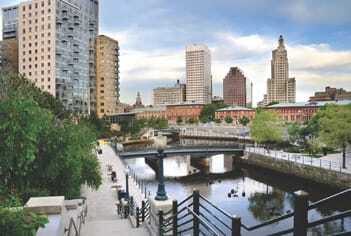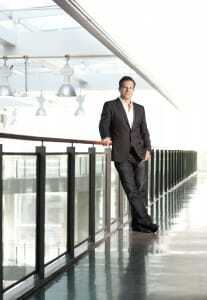Why do people—especially talented Creative Class people, who have lots of choices—opt to locate in certain places? What draws them to some places and not to others? Economists and social scientists have paid a great deal of attention to the location decisions of companies, but they have virtually ignored how people, especially creative people, make the same choices.
This question first began to vex me more than a decade ago. In search of answers, I began by simply asking people how they made their decisions about where to live and work. I started with my students and colleagues and then turned to friends and associates in other cities. Eventually, I began to ask virtually everyone I met. Ultimately, in the mid-2000s, I put the question at the heart of a major survey I conducted along with the Gallup Organization. The same answers came back time and again.
Place itself, I began to realize, was the key factor. So much so, that I coined a term—quality of place—to sum it up. I use the term in contrast with the more traditional concept of quality of life to cover the unique set of characteristics that define a place and make it attractive. Over time, my colleagues and I have come to refer to these characteristics as Territorial Assets, the fourth T of economic development after Technology, Talent, and Tolerance (what I have elsewhere called the 3Ts of Economic Growth).
Generally, one can think of quality of place as cutting across three key dimensions:
- What’s there: the combination of the built environment and the natural environment; a stimulating, appealing setting for the pursuit of creative lives.
- Who’s there: diverse people of all ethnicities, nationalities, religions, and sexual orientations, interacting and providing clear cues that this is a community where anyone can fit in and make a life.
- What’s going on: the vibrancy of the street life, café culture, arts, and music; the visible presence of people engaging in outdoor activities—altogether a lot of active, exciting, creative goings-ons.
Quality of place can be summed up as an interrelated set of experiences. Many, like those provided by the street-level scene, are dynamic and participatory. You can do more than be a spectator; you can become a part of the scene. But while the street buzz is there to be found if you want it, you can also retreat to your home or some other quiet place, chill out in an urban park, or even set out for the country.
Creative-minded people enjoy a mix of influences. They want to hear different kinds of music and try different kinds of food. They want to meet and socialize with people unlike themselves, to trade views and spar over issues. A person’s circle of closest friends might not resemble the Rainbow Coalition—in fact, it usually doesn’t—but creatives want the rainbow to be available.
Authenticity—as in real buildings, real people, real history—is key. A place that’s full of chain stores, chain restaurants, and chain nightclubs is seen as inauthentic. Not only do those venues look pretty much the same everywhere, but they also offer the same experiences you could have anywhere.
Many members of the Creative Class want to have a hand in shaping their communities’ quality of place. Years ago, I attended a meeting of a downtown revitalization group in Providence, Rhode Island. One participant remarked, “My friends and I came to Providence because it already has the authenticity that we like—its established neighborhoods, historic architecture, and ethnic mix.” He went on to implore the group’s leaders to make those qualities the basis of their revitalization efforts and to do so in ways that actively harnessed his and his peers’ energy. Or as he aptly put it, “We want a place that’s not done.”
Quality of place does not occur automatically; it is an ongoing, dynamic process that engages a number of disparate aspects of a community. Like most good things, it is not altogether good: what looks like neighborhood revitalization from one perspective is gentrification from another. Rising housing values often go hand-in-hand with the displacement of long-term residents, a serious problem that demands a serious response.
Interestingly, a counterintuitive trend in current research suggests that gentrification is less disruptive of some neighborhoods than it has been given credit for. According to a study by Columbia University’s Lance Freeman intended for publication next year by the Journal of the American Planning Association, even when controlling for factors like age, race, and overcrowding, gentrifying neighborhoods retain poor households at a higher rate than do nongentrifying ones. Obviously, his study will be tested and challenged; but even if its statistical findings hold up, it bears remembering that gentrification imposes other tolls on long-term residents, even if they are able to remain in their homes.
Two often-overlooked factors that go into quality of place are the thickness of the mating market (only 48 percent of U.S. households include a married couple today) and, seemingly paradoxically, quasi-anonymity. Most people don’t want to live in tightly knit communities, with neighbors figuratively peering over back fences into their lives. Life in modern communities revolves around a set of looser ties that allows us to admit a greater variety of people and information into our lives.
An attractive place doesn’t have to be a big city, but it does have to be cosmopolitan—seething with the interplay of culture and ideas, where outsiders can quickly become insiders and anyone can find a peer group to be comfortable with and groups to be stimulated by. In her book Cosmopolitan Culture, Bonnie Menes Kahn says a great city has two hallmarks: tolerance for strangers and intolerance for mediocrity. These are precisely the qualities that appeal to members of the Creative Class—and they also happen to be qualities conducive to innovation, risk taking, and the formation of new businesses.
Some critics claim that jobs are the only amenities that truly matter. I point them to the Knight Soul of the Community study, which is an expanded version of the survey I began with Gallup years ago. “After interviewing close to 43,000 people in 26 communities over three years,” the Knight Foundation and Gallup concluded in 2011, “the study has found that three main qualities attach people to place: social offerings, such as entertainment venues and places to meet; openness (how welcoming a place is); and the area’s aesthetics (its physical beauty and green spaces).”
Some of my critics argue that my focus on quality of place, especially in regard to artistic scenes and diversity, is a trendy pose. Pointing to sprawling tech enclaves like the suburbs of northern Virginia, Silicon Valley, or the outer rings of Seattle, they make the point that the people who work in high-tech industries actually prefer traditional suburban lifestyles. My response is simple: all of those places are located within major metropolitan areas that are among the most diverse in the country. As colorless and bland as those suburbs might appear to some, they are constituent parts of a broader milieu. Silicon Valley, for example, can’t be understood without reference to the 1960s counterculture of the wider San Francisco Bay area—Esalen, the Grateful Dead, the Summer of Love, the Black Panthers, Harvey Milk, the Castro, and all. Had Silicon Valley not been receptive to offbeat longhairs like the young Steve Jobs and Steve Wozniak, it could not have become what it is today.
What people want is not an either/or proposition. Successful places do not provide just one thing; they provide a range of quality-of-place options for different kinds of people at different stages in their lives. Great cities and metro areas are not monoliths. As Jane Jacobs said long ago, they are federations of neighborhoods.
Think about New York City and its environs. When they first move to New York, young people cluster in relatively funky places like the East Village, South Slope, Williamsburg, or Hoboken, where there are lots of other young people, the rent is more affordable, and roommate situations can be found. When they earn a little more, they move to the Upper West Side or maybe Fort Greene or Jackson Heights; earn a little more, and they can trade up to the West Village or the Upper East Side. Once marriage and children come along, some stay in the city while others relocate to bedroom communities in places like Westchester County, Connecticut, or the New Jersey suburbs. Later, when the kids are gone, some of these people buy a co-op overlooking Central Park or a duplex on the Upper East Side. Members of the Creative Class come in all shapes, sizes, colors, ages, and lifestyles. To be truly successful, cities and regions must offer something for all of them.
Quality of place defines the very soul of a successful community; the factors that go into it—aesthetic, cultural, demographic—add up to the things that everyone wants in their communities. This is not to say that jobs, schools, and safety do not also matter. Of course they do. But those who frame the issue as an either/or proposition—jobs or scenes, quality of life or basic services—are offering a false choice. In my book Who’s Your City?, I likened what we want in our communities to psychologist Abraham Maslow’s hierarchy of needs. Just as we want more from our lives than the mere basics of bodily subsistence, we also want more from our communities.
Quality of place is not a frill; it is a necessity.






